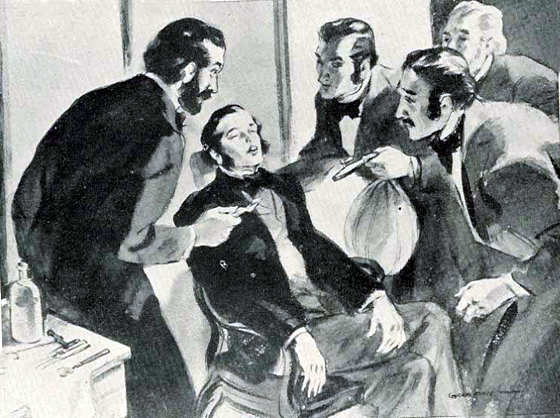
This week for our How I Write series, my accountability group asked, “Dialogue, narrative, exposition, or description? What are your favorite parts of writing and why? Your least favorite and why? What do you do to make your least favorite parts more attractive or easier?”
Deceptively Easy Parts of Writing
When I am able to completely turn off my internal editor, my writing defaults to dialogue. I end up with pages and pages of talking heads with the barest indication of what’s going on around them physically. The other trap I seem to fall into is INTERNAL monologues where the character will go on forever about what they think of a situation or mull over what to do next.
The dialogue runs are fun, because it’s like eavesdropping on a conversation and taking dictation. The trick is tipping the balance from talking heads to meaningful conversation between realistic characters. The introspective runs… they’re usually a good sign I need to stop, figure out where the story is going next and how to get the hero and heroine back on the page together. When I’m stuck, if I can get them in the same place and get them talking, things usually get moving again.
The Hardest Parts of Writing
I think the aspect I’m currently weakest on is using body language to convey emotion and character. Showing character is usually a little easier, but I find myself drifting back to my online roleplaying game days and relying on a small repertoire of actions: smiling, nodding, eyerolling, and various methods of fiddling with hair.
In the first draft, I do a bare minimum of actions. They’re more placeholders to remind me of the mood at the time. I have to go back and layer in emotion and variety. This is often done by adding in thoughts and reactions as well as other physical actions.
Description is another thing I find is either on or off for me. Usually, it’s something I have to go back and add in, unless it’s part of initially setting a scene. Oh, and I suck at describing clothing. I may have researched a fair amount on it, but I’m definitely not a fashionista for either the 21st or 19th century.
Strengthening the Weaknesses
So…how do I take the things I don’t like writing as much or don’t come as naturally and turn it into something that works? I’m apparently still working on that. For me, I need to make several passes and concentrate on one aspect at a time. My current pass is turning wooden, rote actions into something meaningful for the story that paint a better picture of the characters for the reader. Reading aloud helps find the stilted phrases and roleplaying the characters makes this more entertaining for me and often brings pleasant surprises with it.
I’d say the best thing to do is run with what you enjoy and comes easy to get down the story bones, but don’t be afraid to go back and add in more details even if it takes a few passes to flesh out that skeleton. Critical reading (to see how others pull it off) and practice also makes it easier. I don’t know if I’ve been successful at strengthening my weaknesses, but I know my writing process is going to be a work in progress for quite some time.
A Different Lens
I knew I used that phrase a lot in respect to my writing, but it had never really clicked before, why. I’ve been using the phrase long before I got my dSLR camera last year, but I get it now. I’ve mentioned before that photography has always been present in my life between my grandfather and my father. I frequently had a cheap little camera in my hands growing up and got a SLR camera as my high school graduation present. I loved to play with light, natural objects, and rarely took pictures of people or buildings.
With photography, my weaknesses are definitely still in architecture and people. I very rarely luck out and get something I love. But then again, deliberate practice on these two subjects is not something I have done very often. I think where I succeed with these is when I’m able to bring in elements of nature or at least let go completely and don’t think about it so much. But deliberate practice to explore what works and what doesn’t has been a huge part of this for me. Somehow, working with strangers is easier than people I know, maybe that’s a self-conscious thing. Although that’s my husband’s brother and sister in the photo at the top.
Sometimes, I just luck out.
YOUR TURN: How do you push through things you don’t like to do and can you turn your weaknesses into strengths?
And if you’d like to read about how the rest of my accountability group answered, you can find their blogs here:
* Alexia Reed * Kimberly Farris *
* Angeleque Ford * Danie Ford * Emma G. Delaney





 This is one of those topics where I can’t claim any expertise. In fact, I’m not sure very many people could. A writer’s style and voice are very subjective things. What appeals to one person may turn another completely off reading past the first page. Then, you also can’t confuse the author’s voice with the voice of their narrators.
This is one of those topics where I can’t claim any expertise. In fact, I’m not sure very many people could. A writer’s style and voice are very subjective things. What appeals to one person may turn another completely off reading past the first page. Then, you also can’t confuse the author’s voice with the voice of their narrators. Just like a piece of music won’t sound good if it’s played at all the same volume, writing needs to ebb and flow in its power and intensity as well. This isn’t always about the plot and intrigue, but sometimes it’s about your characters. Are they always running full tilt toward those windmills you have them chasing or do you give them a break and let them breathe a little?
Just like a piece of music won’t sound good if it’s played at all the same volume, writing needs to ebb and flow in its power and intensity as well. This isn’t always about the plot and intrigue, but sometimes it’s about your characters. Are they always running full tilt toward those windmills you have them chasing or do you give them a break and let them breathe a little? I’m sure everyone is going to be sick of the
I’m sure everyone is going to be sick of the 

